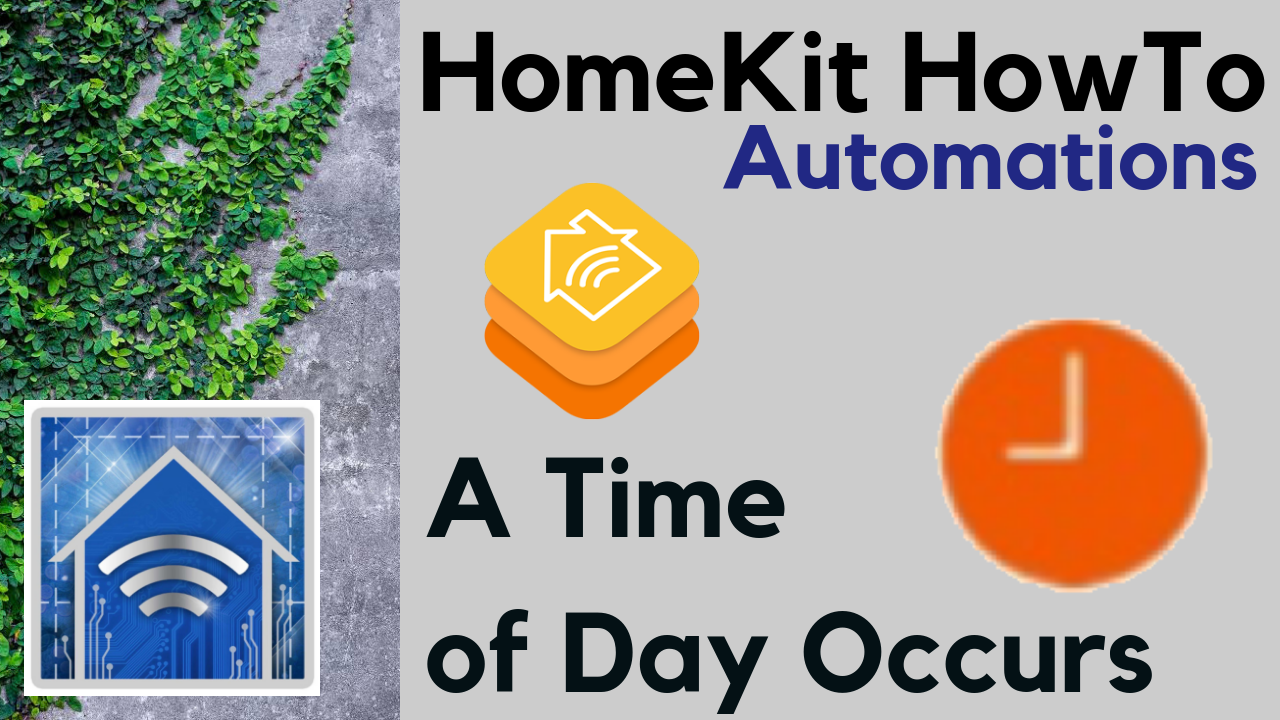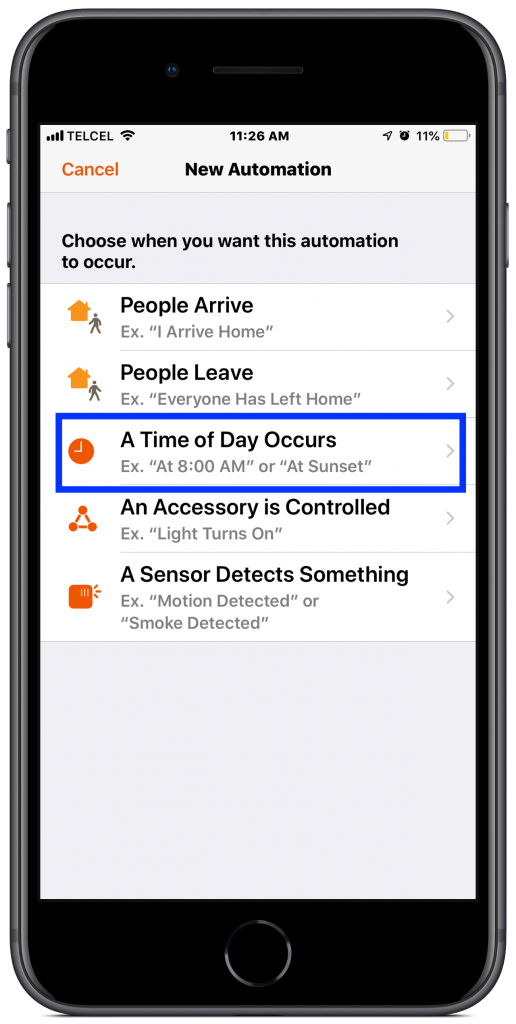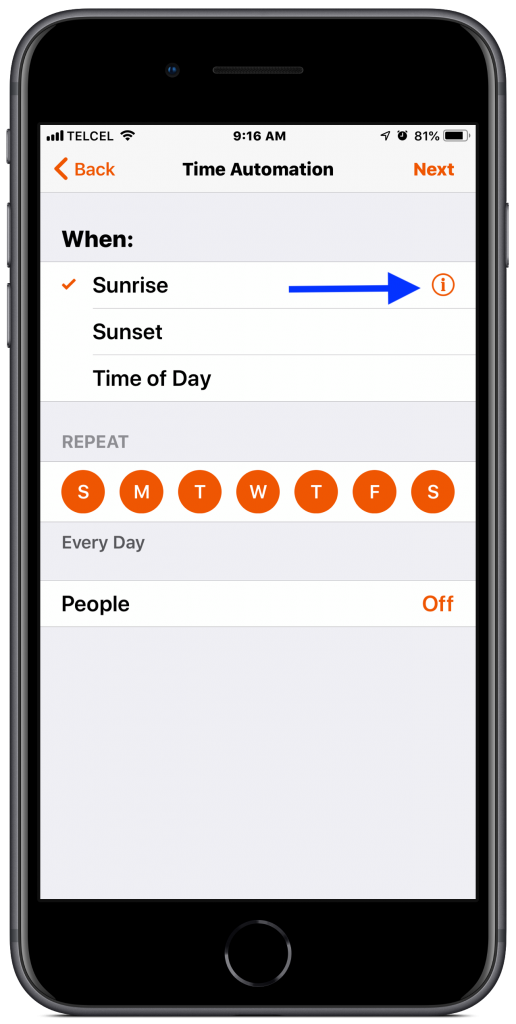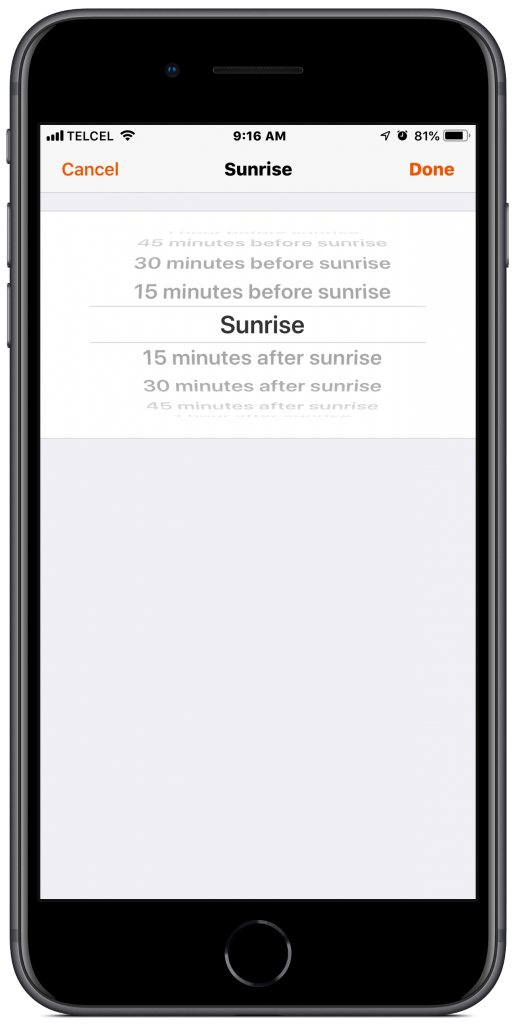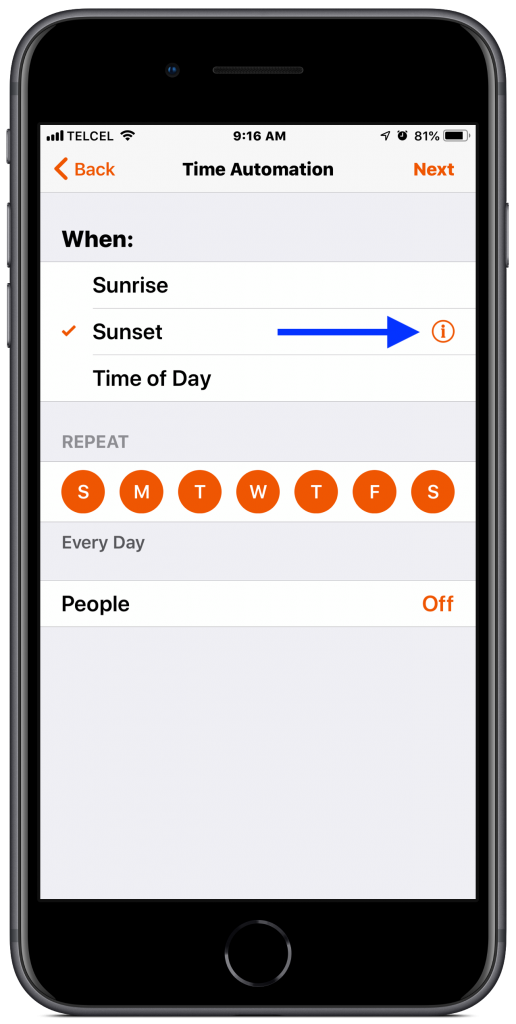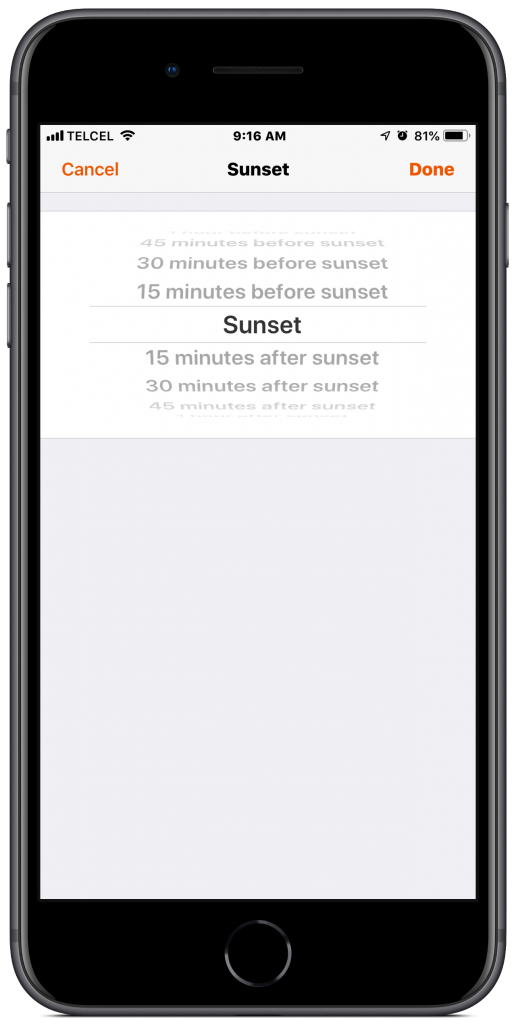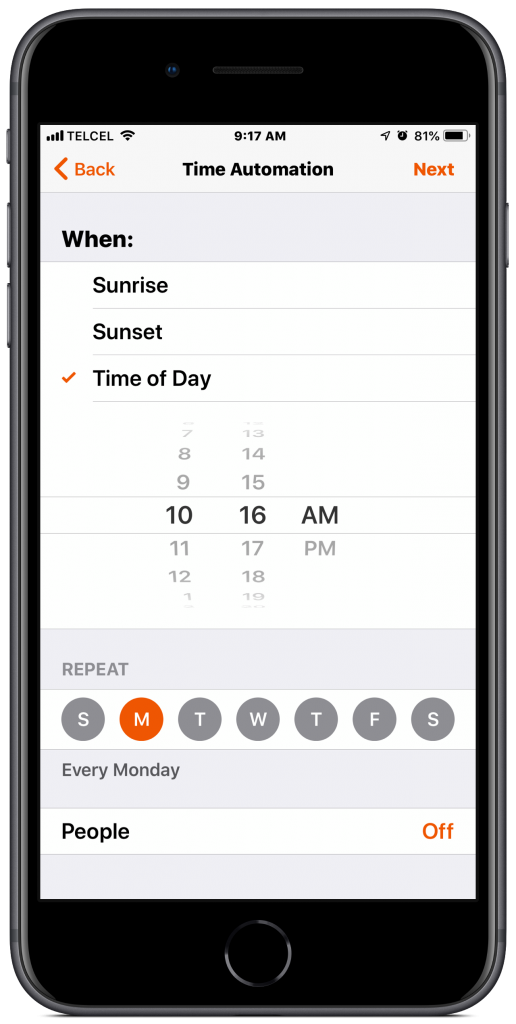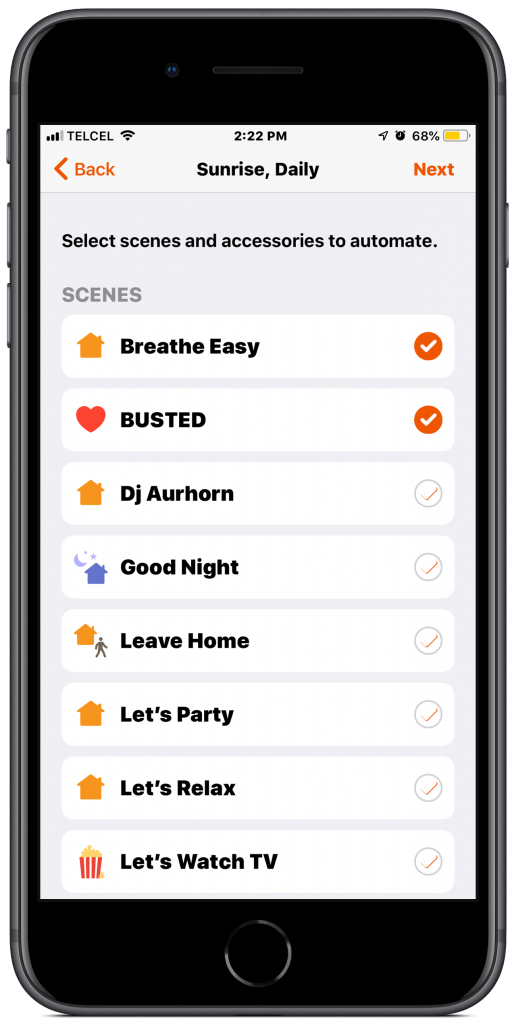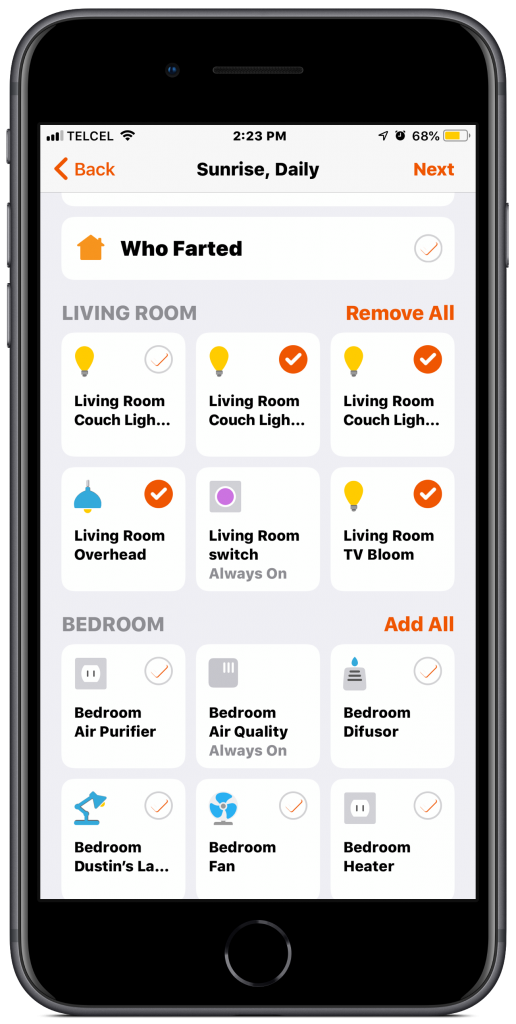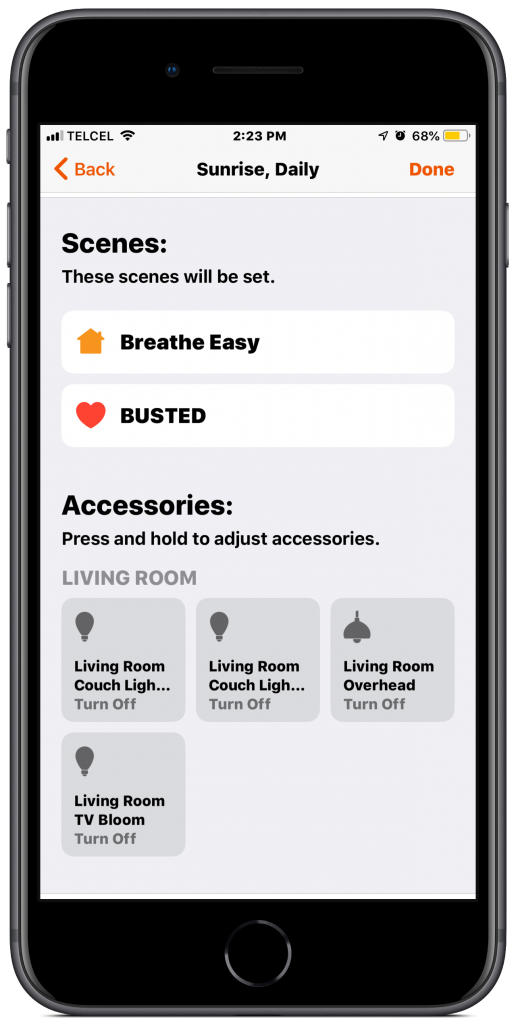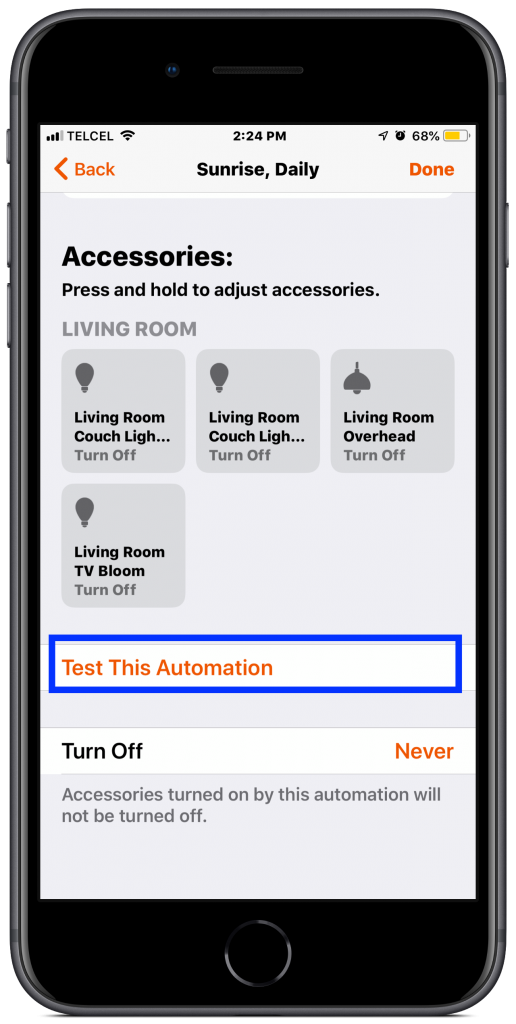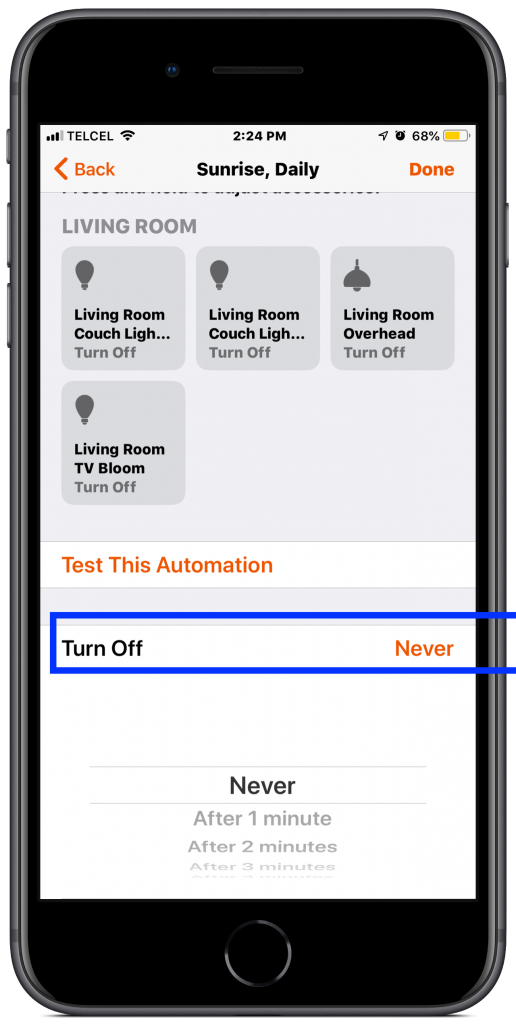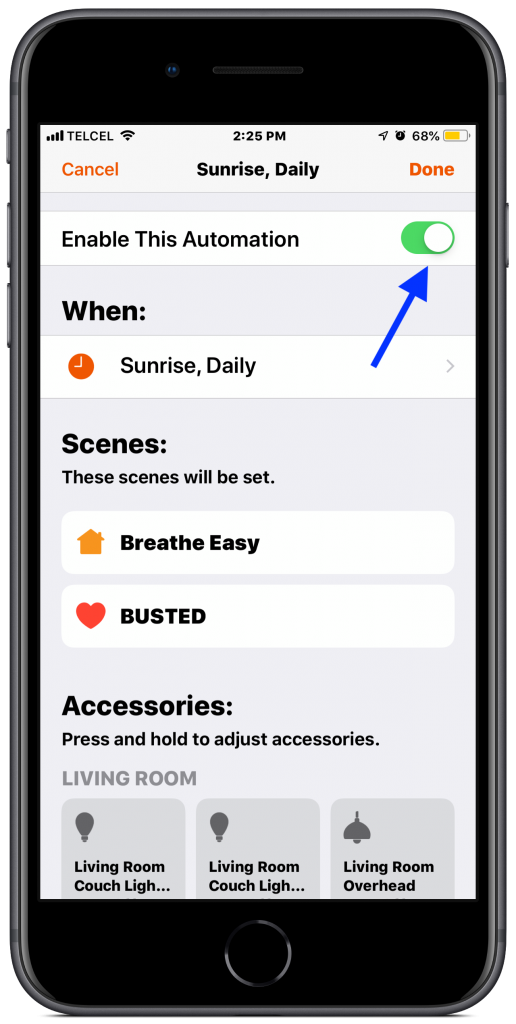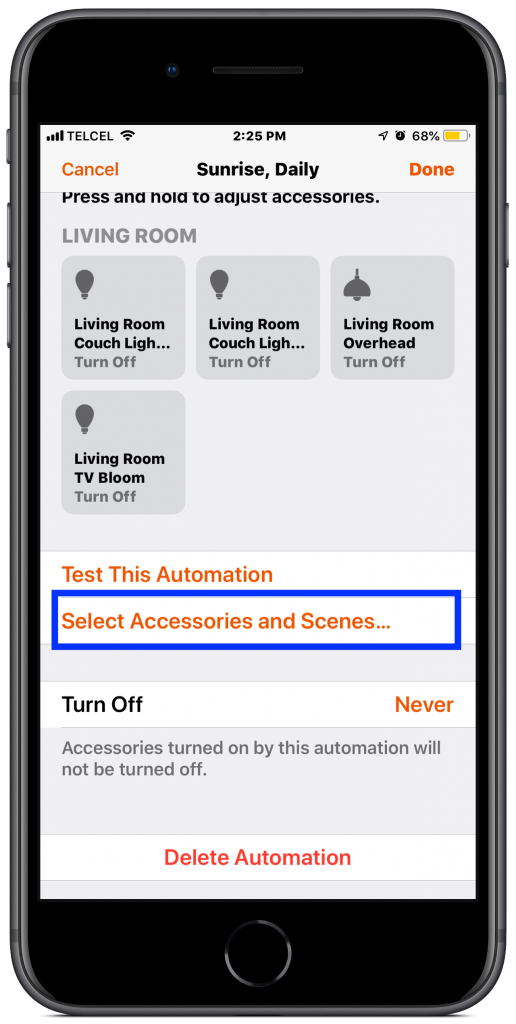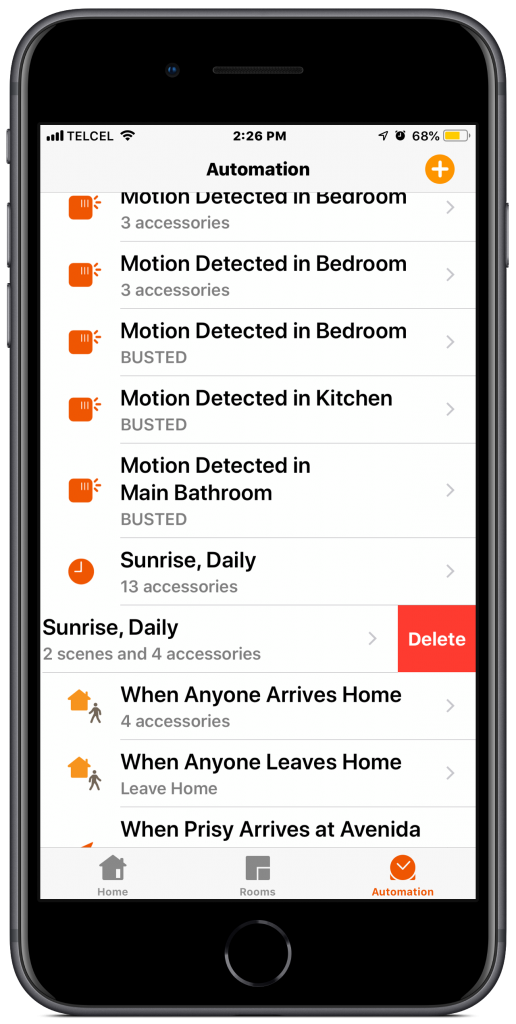Most humans are bound to time. While in some cases time can seem arbitrary and even annoying, in other instances, it’s extremely useful and natural. Either way, there isn’t a person on this planet who isn’t affected by time. Home automations based on times of the day can be useful for gentle reminders to do something, to help you wake up or go to sleep, for security, or even energy savings. Let’s look at all we can do with automations based on times of the day in HomeKit.
1. After going to the “Automations” tab, tapping the + (plus) button at the top right, and selecting our third option, “A Time of Day Occurs”, we are prompted to select the time that the automation will run. If we choose the “Sunrise” or “Sunset” times, by tapping the information button to the right, we can specify the time in 15-minute increments up to an hour before or after sunrise or sunset. This is particularly useful for controlling indoor or outdoor lights that are based more on the assumed light level rather than a time. The downside is that it doesn’t account for changes in weather. Not surprisingly, we can also choose an exact time, to the minute at least, that we would like the automation to run.
2. We also have the ability to choose, to a certain degree, how often the automation is repeated. By default, all of the days of the week are chosen indicating that the automation is to run every day, but we can tap on the day to customize the weekly schedule of the automation. It would definitely be nice if we had the option to expand this into monthly, seasonally, and yearly scheduling. Get on it, Apple!
3. Our third condition is based on people being at home. We can choose from “When somebody/nobody is home” or “When I am / am not home” While convenient for making sure that scenes aren’t running when they don’t need to be, it could be taken a step further and opened up to locations other than the home and for specific individuals in the home, as well. Get on it, Apple!

4. Now that we’ve set our conditions, it’s time to get into the actions. As with the previous two automations, we have the option to choose between scenes and accessories, or a combination of the two, and even multiple scenes and accessories. It’s a fire sale on scenes and accessories!! Don’t forget that unless you want an accessory to keep whatever state it’s in when the automation runs, you’ll want to include it in the automation and tell it what you want it to do. You are the decider!
5. Actions chosen and fiddled with to our heart’s content, we can test the automation bearing in mind that really all it will test is the actions of the automation and not the automation itself since there’s no real way to test for conditions unless those conditions are met. We also have the option of turning off the accessories in the automation from between 1 and 5 minutes and in 5-minute increments up to an hour.
6. Now that we’re “Done” and our automation is added to our list, we can make any adjustments that we would like by tapping on it. We are able to enable/disable the automation in the event we prefer it not run. We’re also able to adjust the conditions and actions, as well as the “Turn Off” function. Finally, we can eliminate the automation permanently by either pressing “Delete Automation” or by swiping to the left from our list of automations. Be careful with the latter option as it does not ask for confirmation.
Final Thoughts
Though a bit more limited than the location-based arriving and leaving automations, automations based on a time of day are nifty for keeping your circadian rhythm in check, randomizing lighting when nobody’s home for that “lived-in” effect, or to have a freshly brewed cup of coffee as soon as you can make it from your bed to the coffee pot. They can also work in a pinch in lieu of a sensor, if you are a creature of habit, though sensors really do make your home smarter. I do wish that we had the ability to create more large-scale scheduled automations since, I don’t know about you, but my habits tend to change from season to season, or at least between January and August.
What’s your favorite time of day to run automations? What conditions would you add? Do you hate time altogether and only use sensors? Tell the world about it in the comments below. We’re also regularly found on the socials media @myhomekithome.
We use income-earning affiliate links.
We may receive a small commission on purchases made using links on this page at no extra cost to you.
